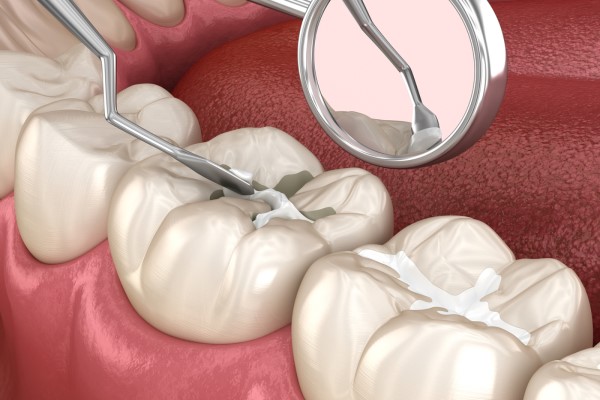Oral health is best maintained through prevention. While brushing and flossing are important, there are other ways to protect teeth from decay and damage. Dental sealants are a particularly effective and proactive approach to maintaining oral health. In this article, we will explore what dental sealants are, how they work, their benefits, and why they are an integral part of modern preventive dentistry.

Understanding Dental Sealants
Dental sealants are thin, protective coatings applied to the chewing surfaces of the back teeth, namely the premolars and molars. These surfaces, characterized by deep grooves and fissures, are notoriously difficult to clean thoroughly with a toothbrush alone. Consequently, they are prime targets for plaque accumulation and subsequent tooth decay.
Sealants are typically made from a resin material that bonds tightly to the tooth surface, creating a barrier that prevents food particles and bacteria from settling into the crevices. By sealing off these vulnerable areas, dental sealants effectively reduce the risk of cavities and other dental problems.
The Application Process
The process of applying dental sealants is straightforward and painless. It is typically performed by a dentist or dental hygienist and can be completed in just a few minutes per tooth. Here's a brief overview of what to expect during a sealant application:
- Preparation: The teeth receiving the sealants are thoroughly cleaned and dried to ensure optimal adhesion.
- Etching: A special acidic solution is applied to the tooth surface to create a rough texture that allows the sealant to bond more effectively.
- Application: The sealant material is carefully painted onto the chewing surfaces of the teeth and then hardened using a curing light. Once set, the sealant forms a durable shield over the enamel.
- Evaluation: The dentist or hygienist will check the sealants to ensure they have been applied correctly and provide adequate coverage.
The entire process is quick, painless, and non-invasive, making it suitable for patients of all ages, including children.
Benefits of Dental Sealants
The benefits of dental sealants extend far beyond cavity prevention. Here are some of the key advantages associated with this preventive treatment:
- Cavity Protection: By sealing off the deep grooves and fissures of the teeth, sealants help prevent food particles, bacteria, and plaque from accumulating and causing decay.
- Cost-Effective: Investing in dental sealants can save both time and money in the long run by reducing the need for more extensive and costly dental treatments, such as fillings and root canals.
- Painless and Non-Invasive: Unlike some dental procedures that may cause discomfort or anxiety, the process of applying sealants is painless and requires no drilling or anesthesia.
- Long-lasting: With proper care and maintenance, dental sealants can last for several years, providing sustained protection against cavities and tooth decay.
- Suitable for All Ages: While sealants are commonly applied to children's teeth as soon as their permanent molars erupt, they can also benefit adults who are at risk of developing cavities.
- Promotes Better Oral Health: By minimizing the risk of tooth decay, sealants contribute to overall oral health and hygiene, helping individuals maintain healthy smiles for years to come.
Who Can Benefit from Dental Sealants?
While dental sealants offer significant benefits for individuals of all ages, they are particularly beneficial for certain groups, including:
- Children and Teens: Sealants are typically applied to the permanent molars of children and teenagers shortly after they erupt, providing early protection against cavities during these formative years.
- Adults with Deep Grooves: Adults who have deep grooves and fissures in their teeth may also benefit from sealants, as these areas are prone to plaque accumulation and decay.
- Individuals at Higher Risk of Cavities: Those with a history of cavities or other dental issues may benefit from sealants as an additional preventive measure to safeguard their oral health.
- Patients with Orthodontic Appliances: Patients undergoing orthodontic treatment with braces or other appliances may find it challenging to clean around brackets and wires effectively. Sealants can help protect these vulnerable areas from decay during treatment.
Maintaining Dental Sealants
While dental sealants provide excellent protection against cavities, it's essential to practice good oral hygiene and attend regular dental check-ups to ensure their effectiveness over time. Here are some tips for maintaining dental sealants:
- Brush and Floss Regularly: Even with sealants in place, it's crucial to brush your teeth twice a day and floss daily to remove plaque and food particles from the surfaces of the teeth.
- Avoid Chewing on Hard Objects: To prevent premature wear and damage to the sealants, avoid chewing on hard objects such as ice, pens, or hard candies.
- Attend Regular Dental Check-ups: Visit your dentist every six months for routine cleanings and examinations. During these appointments, your dentist can assess the condition of your sealants and recommend any necessary touch-ups or repairs.
- Monitor for Signs of Wear: Keep an eye on your sealants for any signs of wear or damage, such as chipping or peeling. If you notice any issues, schedule an appointment with your dentist promptly.
In Conclusion
Dental sealants are a valuable tool in the fight against cavities and tooth decay, offering a simple yet effective way to protect teeth from harm. By sealing off the vulnerable chewing surfaces of the back teeth, sealants provide a durable barrier against plaque and bacteria, promoting long-term oral health and hygiene. Whether you're a child, teenager, or adult, investing in dental sealants can pay dividends in the form of a healthy, beautiful smile for years to come. So why wait? Talk to your dentist today about whether dental sealants are right for you or your loved ones and take the first step toward a cavity-free future.



